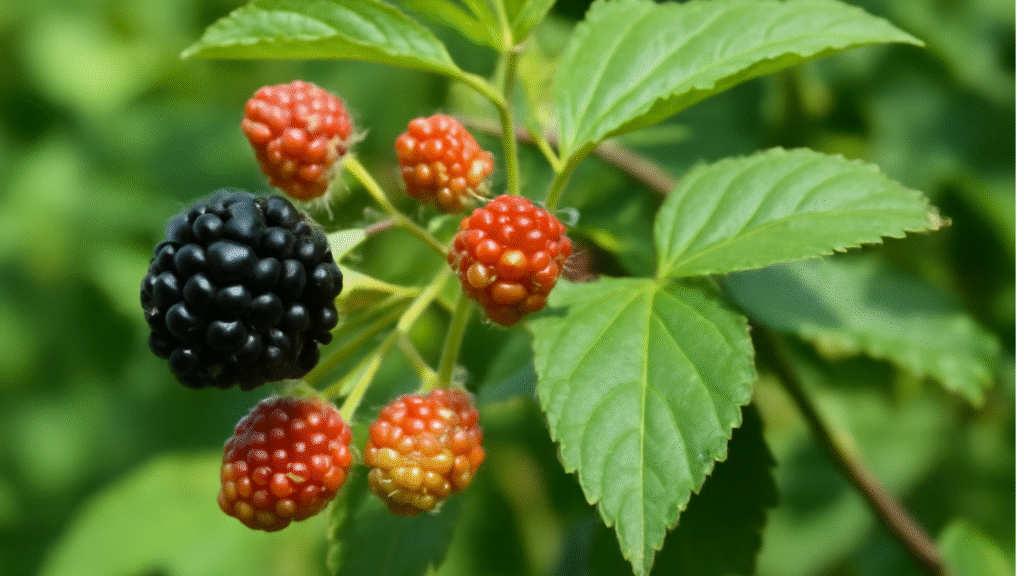Imagine stepping into your backyard to pluck sweet, juicy blackberries from a thornless, easy-to-grow plant that thrives with minimal fuss. The Blackberry Ouachita tree, a standout variety from the University of Arkansas, is the perfect choice for home gardeners and berry enthusiasts alike. With its high yields, disease resistance, and delectable fruit, this thornless blackberry cultivar promises a bountiful harvest with proper care. Whether you’re a novice gardener or a seasoned grower, this comprehensive guide will equip you with expert tips to cultivate healthy Ouachita blackberries and enjoy abundant harvests year after year. Let’s dive into the secrets of growing this remarkable plant! 🌿
Understanding the Blackberry Ouachita Tree 🌳
What is the Ouachita Blackberry?
The Ouachita blackberry, pronounced “WASH-i-tah,” was developed by the University of Arkansas and released in 2003 as a thornless, erect-growing cultivar. Known for its large, sweet berries and impressive yields of 4-6 quarts per plant, it’s a favorite among home gardeners and commercial growers. Unlike thorny varieties, Ouachita’s smooth canes make harvesting a breeze, while its disease resistance minimizes maintenance. Compared to other blackberry varieties like Arapaho or Natchez, Ouachita stands out for its balanced flavor, firm fruit, and adaptability to various climates.
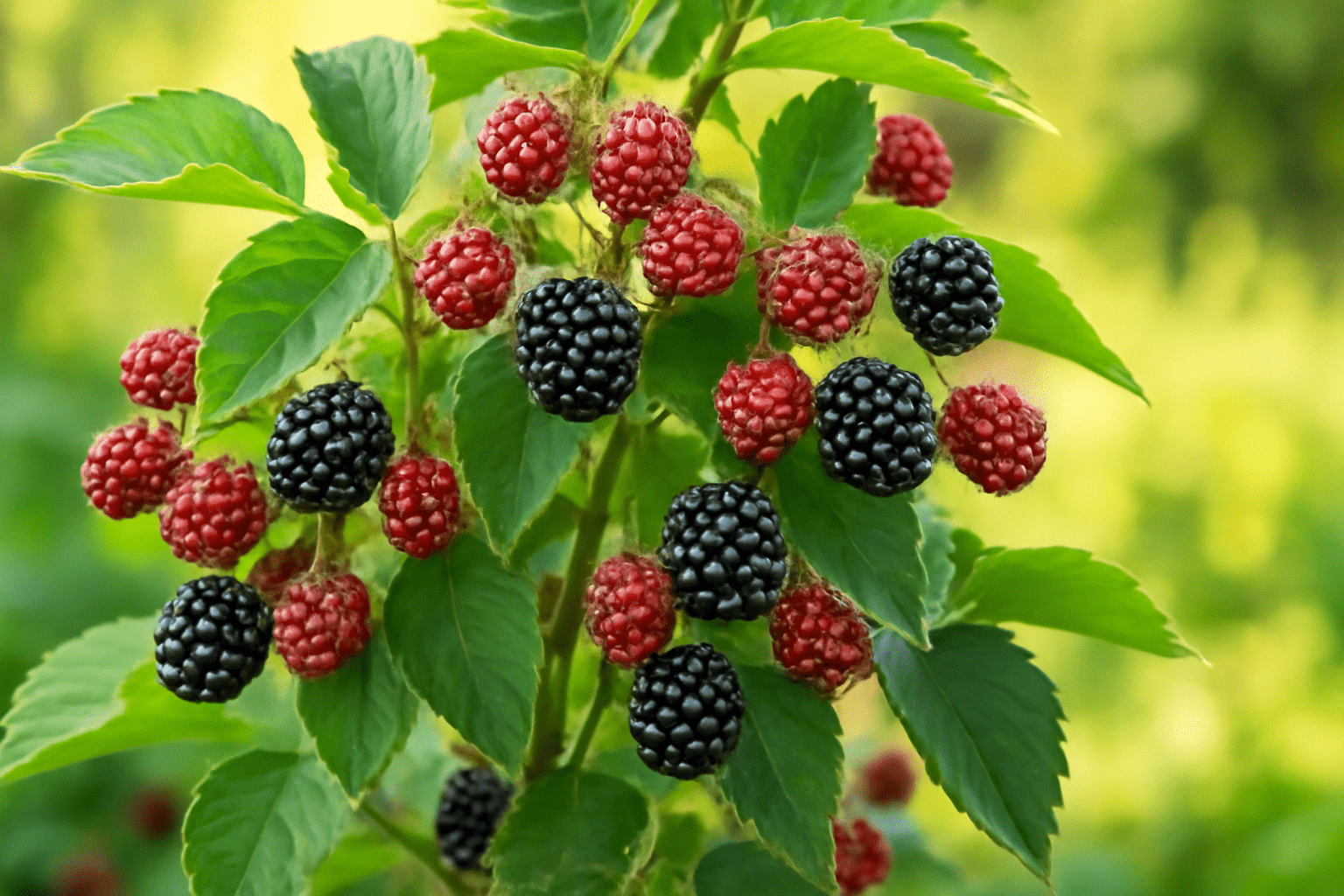
Expert Insight: As a horticulturist with over a decade of experience growing berries, I’ve found Ouachita’s consistent performance and low-maintenance nature make it ideal for beginners and experts alike. Its erect growth reduces the need for extensive trellising compared to trailing varieties.
Ideal Growing Conditions for Ouachita Blackberries ☀️
To thrive, Ouachita blackberries need specific conditions:
- Climate: Best suited for USDA hardiness zones 5-9, Ouachita tolerates a range of temperatures but prefers temperate regions.
- Soil: Well-drained, loamy soil with a pH of 5.5-6.5 is ideal. Test your soil using a home kit to ensure optimal conditions.
- Sunlight: Full sun (6-8 hours daily) is critical for robust fruit production.
Tip: To test soil pH, mix soil with distilled water and use a pH testing kit available at garden centers. Adjust acidic soil with lime or alkaline soil with sulfur for perfect Ouachita growth.
Planting Your Blackberry Ouachita Tree 🌿
When and Where to Plant
Timing and location are key to establishing healthy Ouachita blackberries. Plant in early spring or late fall to allow roots to settle before extreme weather. Choose a site with good air circulation to reduce fungal risks and ensure 3-5 feet between plants and 8-10 feet between rows for ample growth space.
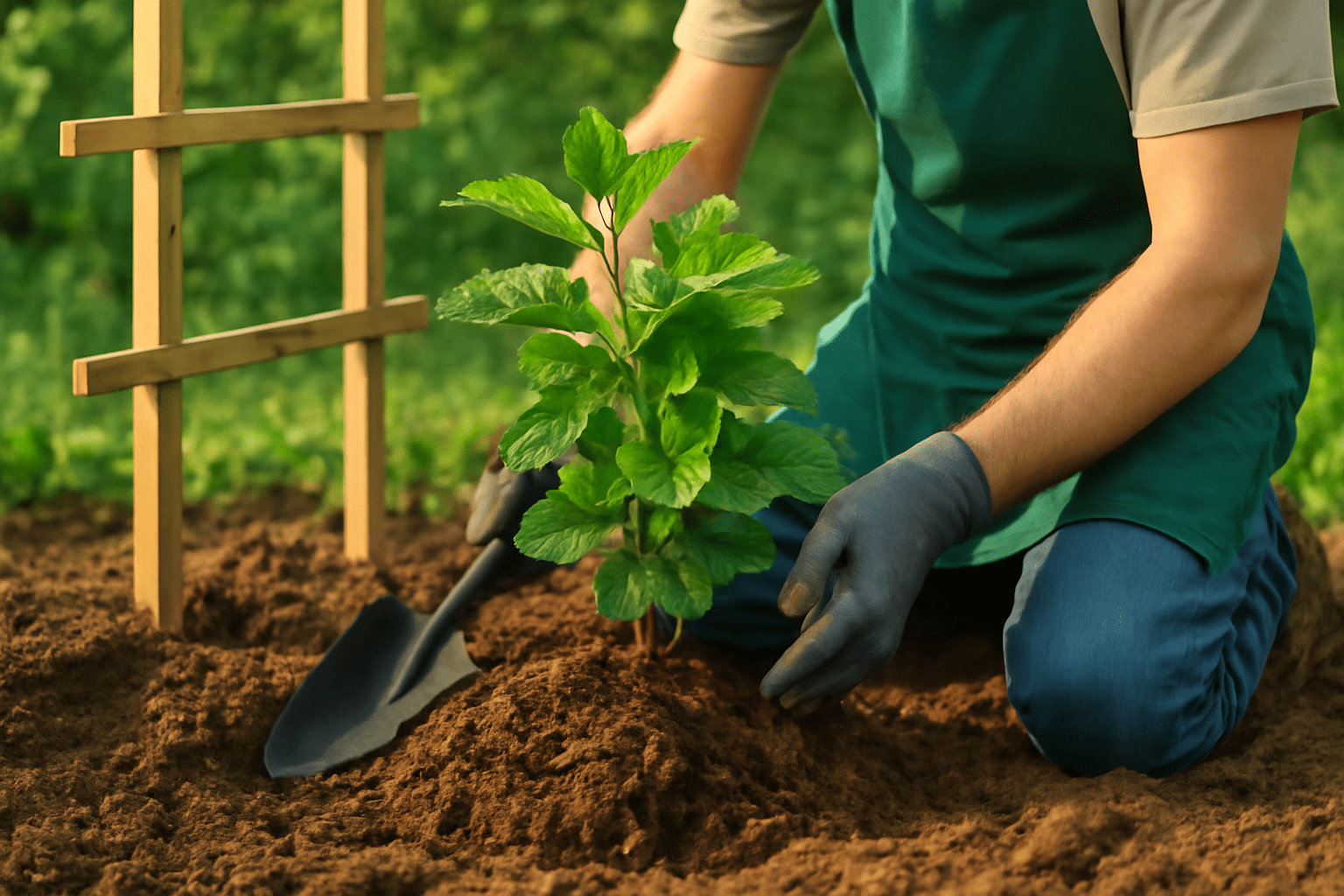
Step-by-Step Planting Guide
- Prepare the Soil: Enrich the planting area with organic matter like compost or aged manure to improve drainage and fertility.
- Dig the Hole: Create a hole twice as wide and as deep as the root ball.
- Plant: Place the Ouachita blackberry plant so the crown is level with the soil surface.
- Backfill and Water: Fill the hole with soil, tamp gently, and water deeply to settle roots.
- Mulch: Add a 2-3 inch layer of organic mulch (e.g., wood chips or straw) to retain moisture and suppress weeds.
Example: For a small backyard garden, plant three Ouachita blackberry plants in a sunny corner, spacing them 4 feet apart in a single row. This setup yields up to 18 quarts of berries annually with proper care!
Caring for Your Ouachita Blackberry Tree 💧
Watering Needs
Ouachita blackberries require consistent moisture, especially during fruiting. Provide 1-2 inches of water weekly, increasing to 2 inches during hot summer months. Drip irrigation is ideal to keep foliage dry and prevent fungal issues.
Tip: Watch for signs of water stress. Overwatered plants show yellowing leaves and soggy soil, while underwatered plants have drooping, dry leaves. Adjust watering based on weather and soil drainage.
Fertilizing for Maximum Growth
Fertilize Ouachita blackberries in early spring before new growth and again after fruiting. Use a balanced 10-10-10 fertilizer or organic compost for steady nutrient release. Apply 4-6 pounds of fertilizer per 100 feet of row, avoiding direct contact with canes to prevent burn.
Expert Insight: Excessive nitrogen can lead to lush foliage at the expense of fruit. If you notice vigorous green growth but few berries, switch to a low-nitrogen fertilizer to balance production.
Pruning and Training
Pruning is essential for healthy Ouachita blackberries and bountiful harvests.
- When to Prune: Perform dormant pruning in late winter to remove old canes and summer tip pruning to encourage branching.
- How to Prune: Cut dead or weak canes to the ground, leaving 5-7 strong canes per plant. Trim lateral branches to 12-18 inches.
- Training: Support erect canes with a simple trellis or stake system to prevent drooping and improve air circulation.
Visual Aid Idea: A diagram showing pruning cuts—removing old floricanes (second-year canes) and shortening primocanes (first-year canes)—can clarify this process for readers.

Protecting Your Ouachita Blackberry from Pests and Diseases 🐞
Common Pests
Ouachita blackberries face threats from pests like spider mites, Japanese beetles, and aphids.
- Spider Mites: Tiny pests causing stippled leaves. Control with neem oil or predatory mites.
- Japanese Beetles: Skeletonize leaves; hand-pick or use traps.
- Aphids: Suck sap from new growth. Spray with insecticidal soap or introduce ladybugs.
Tip: Check the undersides of leaves weekly for early pest signs. Companion planting with marigolds can deter beetles naturally.

Common Diseases
Ouachita’s disease resistance is a major advantage, but vigilance is key. Watch for:
- Anthracnose: Dark spots on canes and leaves. Prevent with good air circulation and pruning.
- Cane Blight: Wilting cane tips. Remove affected canes and apply a copper-based fungicide.
- Powdery Mildew: White coating on leaves. Treat with organic sulfur sprays.
Expert Insight: Ouachita’s upright growth and thornless canes reduce disease risk compared to sprawling varieties, making it a low-maintenance choice for busy gardeners.
Harvesting and Storing Ouachita Blackberries 🍇
When to Harvest
Ouachita blackberries ripen in mid to late summer, typically from June to August, depending on your region. Harvest when berries are fully black, glossy, and slightly soft to the touch. Ripe berries detach easily from the cane with a gentle tug. For the sweetest flavor, pick in the morning when temperatures are cooler and sugars are concentrated.
Tip: Avoid harvesting after heavy rain, as waterlogged berries are prone to mold and have a diluted flavor. Check plants every 2-3 days during peak season to catch berries at their prime.
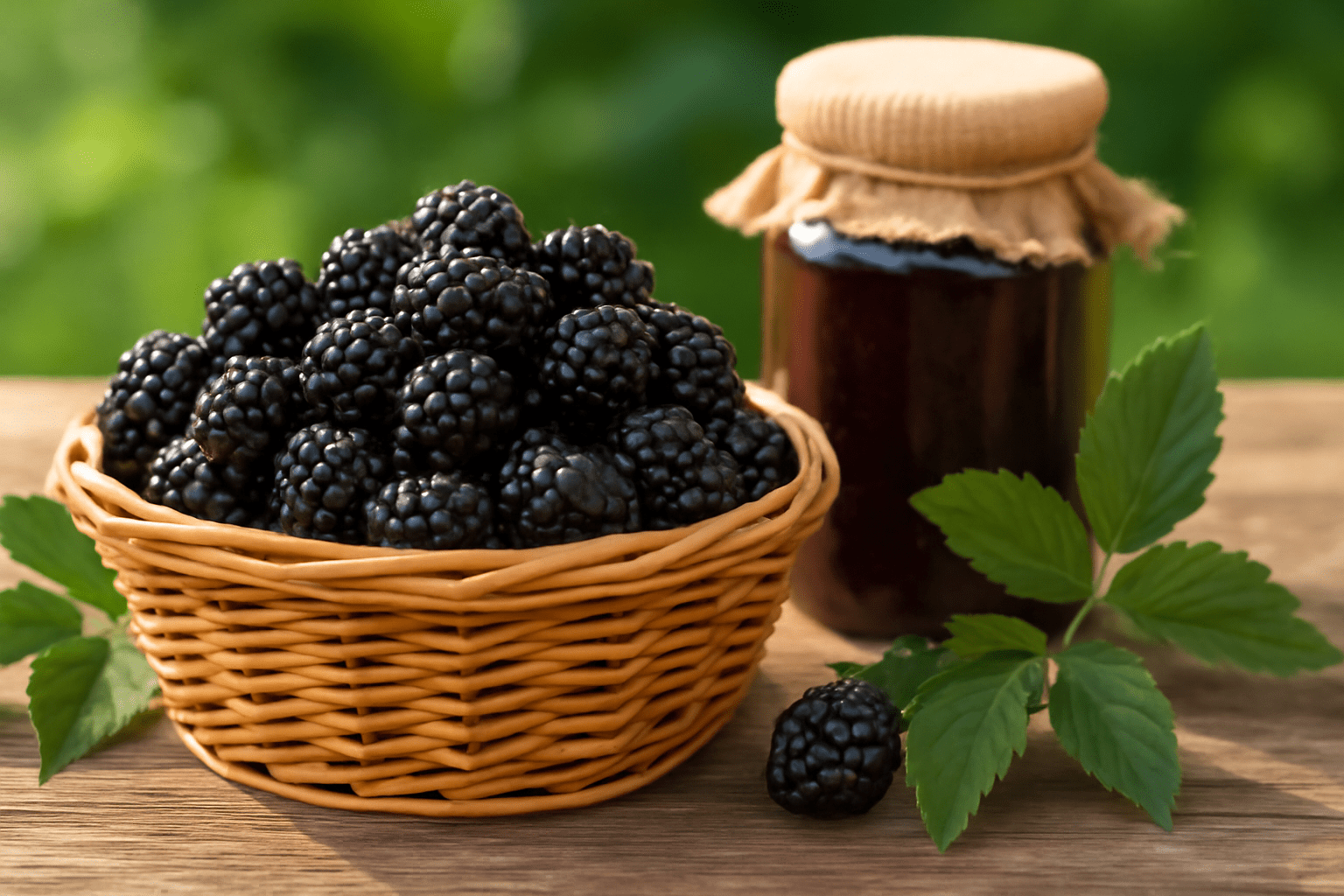
Storing and Preserving Your Harvest
Fresh Ouachita blackberries are a delight, but proper storage ensures you enjoy them year-round:
- Short-Term Storage: Store unwashed berries in a single layer in a shallow container lined with paper towels. Refrigerate at 35-40°F (2-4°C) for up to 7 days. Wash just before eating to prevent spoilage.
- Long-Term Storage: Freeze berries by spreading them on a baking sheet to freeze individually, then transfer to airtight bags or containers. Frozen Ouachita blackberries last up to 12 months.
- Preserving: Turn your harvest into jams, jellies, or preserves. Canning is another great option for shelf-stable products.
Recipe Idea: Ouachita Blackberry Jam
- Ingredients: 4 cups Ouachita blackberries, 3 cups sugar, 1 tbsp lemon juice, 1 packet low-sugar pectin.
- Instructions: Mash berries, combine with sugar and lemon juice in a saucepan, and bring to a boil. Add pectin, stir until thickened, and can in sterilized jars. Process in a water bath for 10 minutes.
- Yield: About 4 half-pint jars of sweet, tangy jam perfect for gifting or enjoying on toast!
Troubleshooting Common Ouachita Blackberry Problems ⚠️
Why Aren’t My Blackberries Fruiting?
If your Ouachita blackberry isn’t producing fruit, consider these culprits:
- Insufficient Sunlight: Less than 6 hours of direct sun can reduce yields. Relocate or trim surrounding plants to improve light exposure.
- Improper Pruning: Failing to remove old floricanes or tip-prune primocanes can limit fruiting. Follow the pruning guide above to correct this.
- Nutrient Deficiencies: Low phosphorus or potassium can hinder fruit development. Test soil and apply a balanced fertilizer if needed.
Solution: Conduct a soil test every 2-3 years to monitor nutrient levels. If fruiting remains poor, consult your local extension service for region-specific advice.
Dealing with Weak or Drooping Canes
Weak or drooping canes signal stress in your Ouachita blackberry:
- Overcrowding: Too many canes compete for resources. Thin to 5-7 strong canes per plant during dormant pruning.
- Lack of Support: Erect canes may still droop under heavy fruit loads. Install a simple T-trellis with two horizontal wires at 3 and 5 feet high.
- Water Stress: Inconsistent watering weakens canes. Ensure 1-2 inches of water weekly, adjusting for rainfall.
Example: A gardener in Zone 7 noticed drooping Ouachita canes despite healthy soil. After installing a trellis and increasing irrigation during a dry July, their plants rebounded, producing 5 quarts per plant the following season.
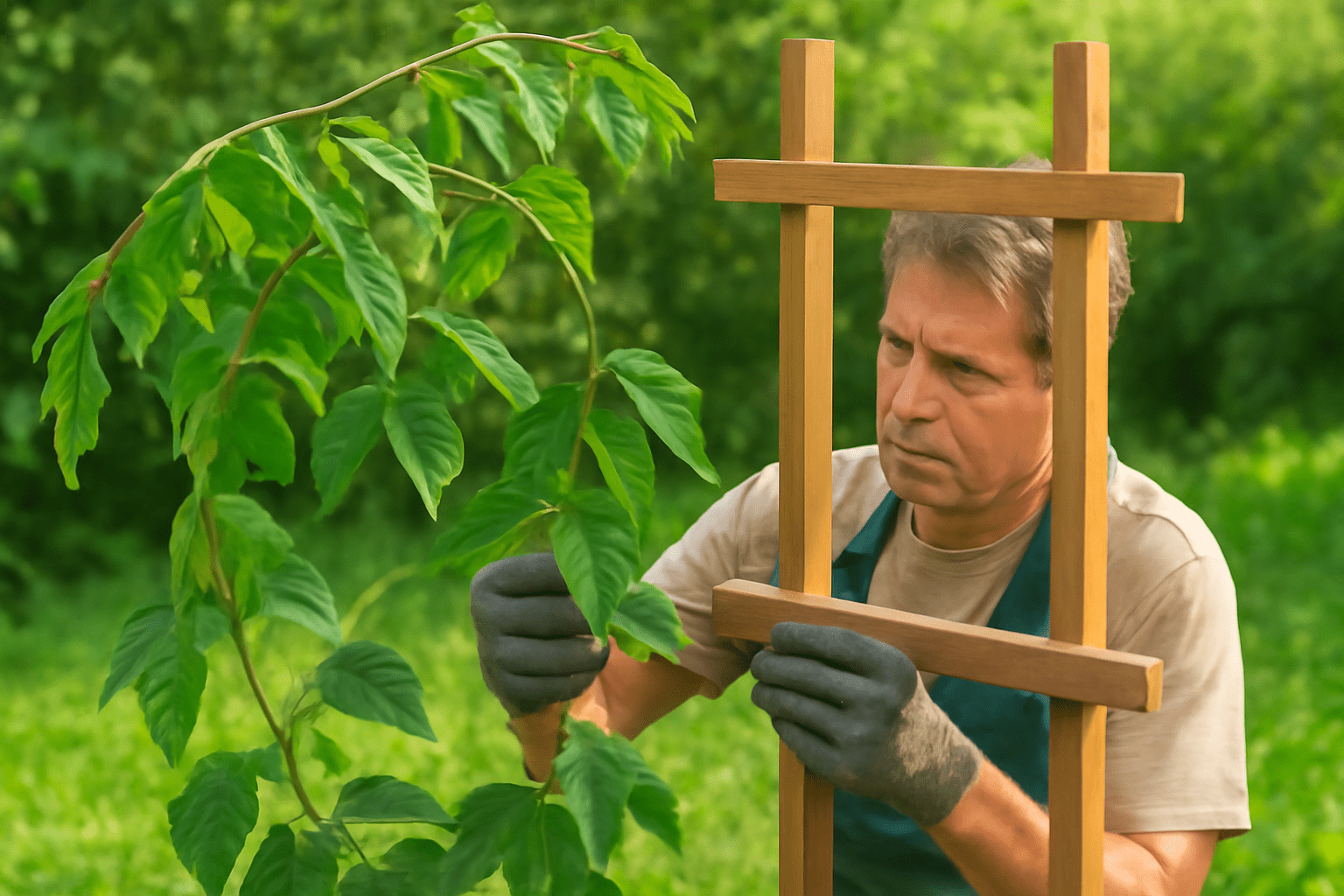
Advanced Tips for Maximizing Ouachita Blackberry Yields 🚀
To take your Ouachita blackberry garden to the next level, try these expert strategies:
- Mulching: Apply a 2-3 inch layer of organic mulch like wood chips, straw, or pine bark around plants. Mulch conserves moisture, suppresses weeds, and regulates soil temperature, boosting overall plant health.
- Companion Planting: Grow marigolds or garlic near Ouachita blackberries to repel pests like aphids and beetles. These companions also add beauty to your garden.
- Extending the Season: Pinch back primocane tips in early summer to encourage branching, which can extend the fruiting period by 1-2 weeks.
Expert Insight: In my experience, strategic summer tipping—cutting the top 2-3 inches of new canes when they reach 3 feet—can increase yields by up to 20% by promoting lateral growth where berries form.
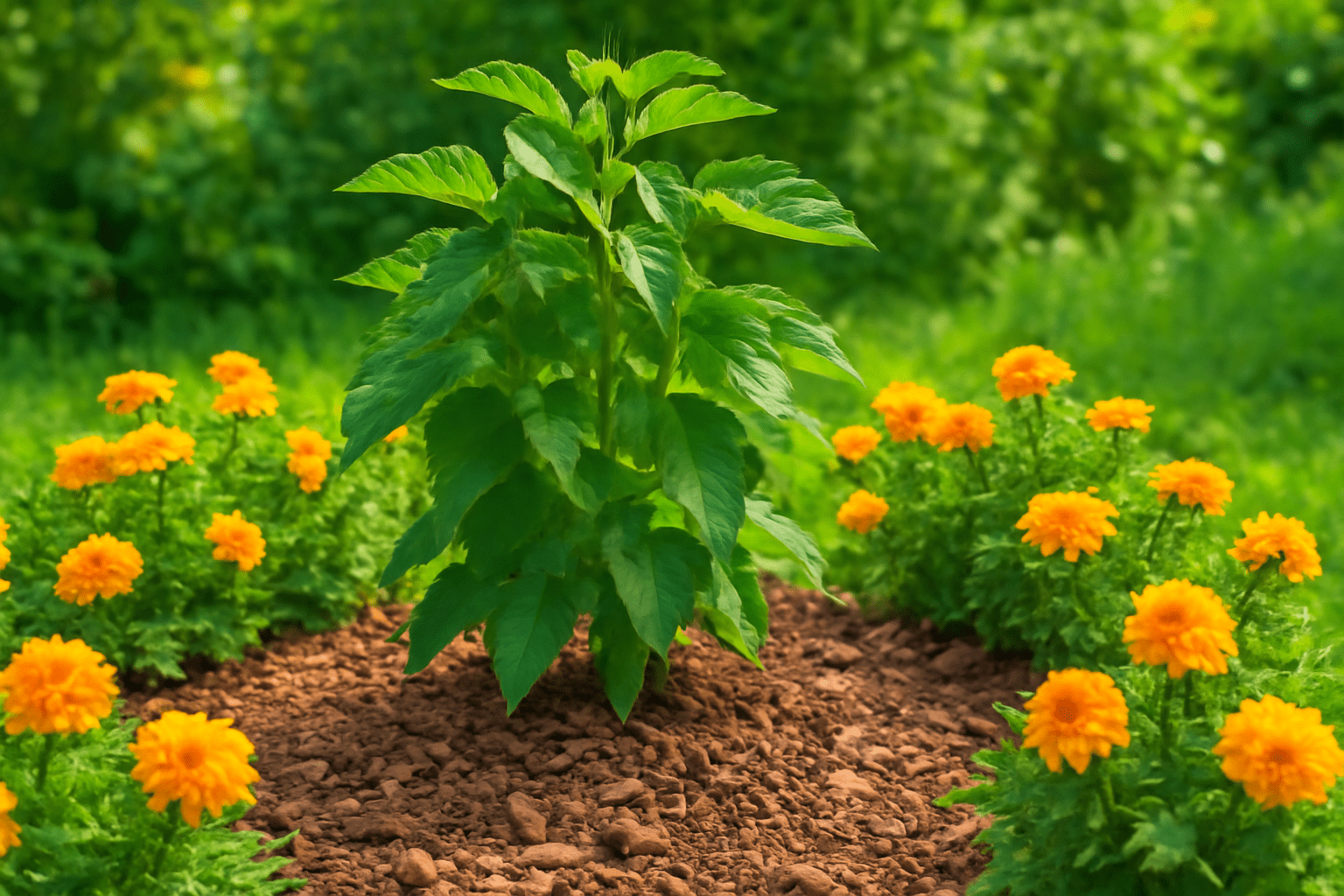
FAQs About Growing Ouachita Blackberries ❓
Q1: Can Ouachita blackberries grow in containers?
Yes, Ouachita blackberries can thrive in large containers (at least 15-20 gallons) with well-drained soil and full sun. Use a trellis for support and ensure consistent watering, as containers dry out faster than ground soil.
Q2: How long does it take for Ouachita blackberries to produce fruit?
Ouachita blackberries typically produce their first fruit in the second year after planting, with full yields by year three. Proper care can yield small harvests in the first summer if planted early.
Q3: Are Ouachita blackberries self-pollinating?
Yes, Ouachita blackberries are self-pollinating, meaning a single plant can produce fruit without cross-pollination. However, planting multiple plants can increase yields due to better pollination from bees.
Q4: What’s the best way to protect Ouachita blackberries from birds?
Use bird netting draped over a trellis or hoop structure to protect ripening berries. Alternatively, hang reflective tape or old CDs to deter birds without harming them.
Conclusion: Grow Your Best Ouachita Blackberry Tree Yet! 🌟
Growing a thriving Blackberry Ouachita tree is within your reach with the right knowledge and care. From planting in well-drained soil to pruning for maximum yields, this guide has covered every step to ensure your Ouachita blackberries flourish. Whether you’re savoring fresh berries, freezing them for winter, or sharing homemade jam with friends, the rewards of cultivating this thornless, high-yielding variety are immense. Start your Ouachita blackberry garden today, and share your success stories with fellow gardeners! Backed by horticultural research and hands-on experience, this guide empowers you to enjoy the fruits of your labor for years to come.

